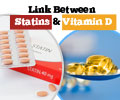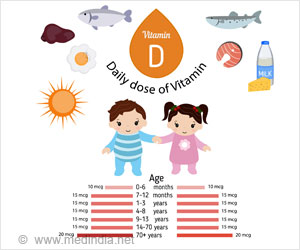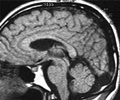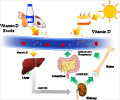Highlights
- Patients with severe burns have low levels of Vitamin D which affect recovery.
- Low serum Vitamin D3 levels impair antibacterial and wound healing responses in burn patients.
- Supplementing with high doses of vitamin D to increase serum 25D3 may greatly improve health outcomes in burns patients.
Vitamin D Levels in Patients With Burns
Professor Janet Lord and Dr. Khaled Al-Tarrah, at the Institute of Inflammation & Aging in Birmingham, investigated the role of vitamin D in recovery from burn injuries. She assessed the recovery progress in patients with severe burns over one year and correlated this with their vitamin D levels.
Prof Lord comments, "Low vitamin D levels were associated with worse outcomes in burn patients including life-threatening infections, mortality and delayed wound healing. It was also associated with worse scarring but vitamin D levels are something generally overlooked by clinicians."
The study found that :
- burns patients tend to have lower levels of vitamin D
- patients with higher levels of vitamin D had a better prognosis, with improved wound healing
- vitamin D supplementation immediately following burn injury may have potent health benefits to the patient
- Vitamin D enhances antimicrobial activity to prevent infection
- Supplementing vitamin D also improved wound healing.
The effectiveness of vitamin D supplementation to improve outcomes in burn patients would need to be verified in clinical trials. Prof Lord and her team are now focused on finding out why there is a rapid loss of vitamin D in patients immediately following burn injury and hope that they may be able to prevent this in future.
Vitamin D - The essential vitamin For Skin Health
Vitamin D is an essential nutrient necessary to maintain healthy bones and teeth. It is available in certain foods, and if dietary intake or supplementation is inadequate, symptoms of vitamin D deficiency develop.
vitamin D deficiency or hypovitaminosis D is an independent risk factor for total mortality in the general population. Vitamin D deficiency is associated with increased risk of common cancers, autoimmune diseases, infectious diseases and hypertension.
Two Forms of Vitamin D
Vitamin D exists in two forms:
Vitamin D2 or Ergocalciferol is obtained from the ultraviolet (UV) irradiation of the yeast sterol ergosterol and is found naturally in sun-exposed mushrooms.
Vitamin D3 known as Cholecalciferol, is synthesized by humans when ultraviolet B (UVB) light from the sun strikes the skin, and so it is the most natural form. Both forms are biologically inactive, and are converted in the body to the active form 1,25 dihydroxy vitamin D.
Vitamin D deficiency is determined by measuring serum 25-hydroxyvitamin D [25(OH)D] concentrations which are the major circulating form of vitamin D.
According to the committee of the Institute of Medicine a level of 20 ng/ml to 50 ng/mL is considered adequate for healthy people. A vitamin D level less than 12 ng/mL indicates vitamin D deficiency.
Reference
- Khaled Al-Tarrah, Carl Jenkinson, Martin Hewison, Naiem Moiemen, Janet Lord. ‘Influence of Vitamin D on Outcomes Following Burn Injury: An Observational Cohort Study’. Society for Endocrinology Annual Conference (2017).
Source-Medindia
















